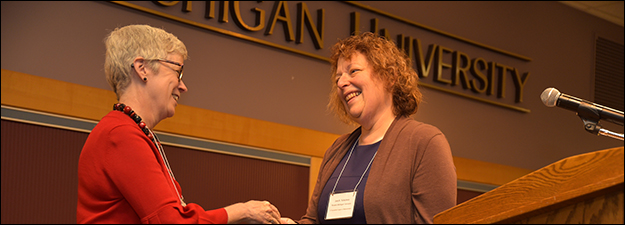Arthurian Books and Readers
Sponsoring Organization(s)
Arthurian Literature
Organizer Name
David F. Johnson
Organizer Affiliation
Florida State Univ.
Presider Name
Elizabeth Archibald
Presider Affiliation
Durham Univ.
Paper Title 1
Reading Walter Map into the Lancelot-Grail Cycle
Presenter 1 Name
Joshua Byron Smith
Presenter 1 Affiliation
Univ. of Arkansas-Fayetteville
Paper Title 2
Cultivating Courtesy (Redux): Reading Sir Gawain and the Carle of Carlisle in NLW MS Brogyntyn II.1
Presenter 2 Name
Kelsey Moskal
Presenter 2 Affiliation
Univ. of British Columbia
Paper Title 3
Reading with Fingers in the Manuscript of Sir Thomas Malory's "Hoole Book of Kyng Arthur"
Presenter 3 Name
Kevin S. Whetter
Presenter 3 Affiliation
Acadia Univ.
Start Date
11-5-2017 1:30 PM
Session Location
Fetzer 1040
Description
Arthurian manuscripts circulated widely across medieval Europe, and are often found today far from their original homes. This circulation, and the comments of readers (in both annotations and personal correspondence) offer invaluable evidence about reading habits and the reception of the evergreen Arthurian legend. For instance, in 1378 Luchino Visconti, wanting amusement on a long sea voyage, wrote to a friend asking for the loan of ‘a romance that speaks of Tristan or Lancelot or some other lovely and delectable material’. In England, someone added the motto of the Order of the Garter, ‘honi soit qui mal y pense’, at the end of the only surviving manuscript of Sir Gawain and the Green Knight: there is much debate about whether this addition is scribal, and how it affects interpretation of the text. This session invites papers on what Arthurian manuscripts can tell us about their readers, both medieval and post-medieval, and about individual responses to Arthurian characters and tales in different countries and centuries.
David F. Johnson
Arthurian Books and Readers
Fetzer 1040
Arthurian manuscripts circulated widely across medieval Europe, and are often found today far from their original homes. This circulation, and the comments of readers (in both annotations and personal correspondence) offer invaluable evidence about reading habits and the reception of the evergreen Arthurian legend. For instance, in 1378 Luchino Visconti, wanting amusement on a long sea voyage, wrote to a friend asking for the loan of ‘a romance that speaks of Tristan or Lancelot or some other lovely and delectable material’. In England, someone added the motto of the Order of the Garter, ‘honi soit qui mal y pense’, at the end of the only surviving manuscript of Sir Gawain and the Green Knight: there is much debate about whether this addition is scribal, and how it affects interpretation of the text. This session invites papers on what Arthurian manuscripts can tell us about their readers, both medieval and post-medieval, and about individual responses to Arthurian characters and tales in different countries and centuries.
David F. Johnson

